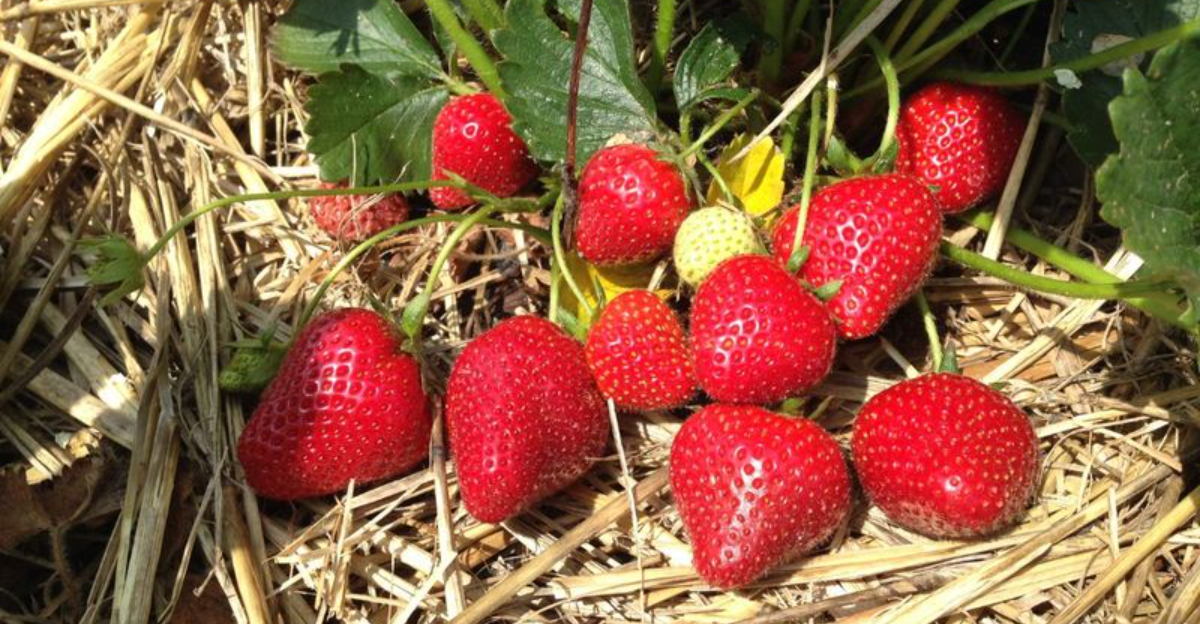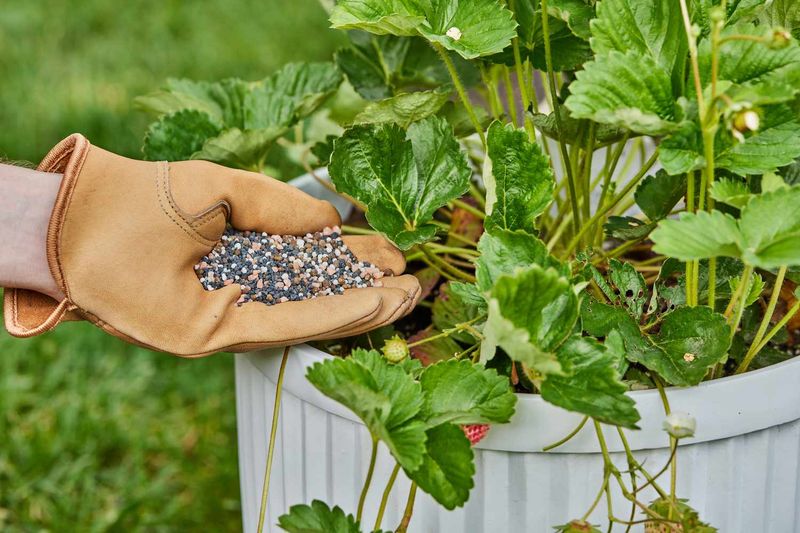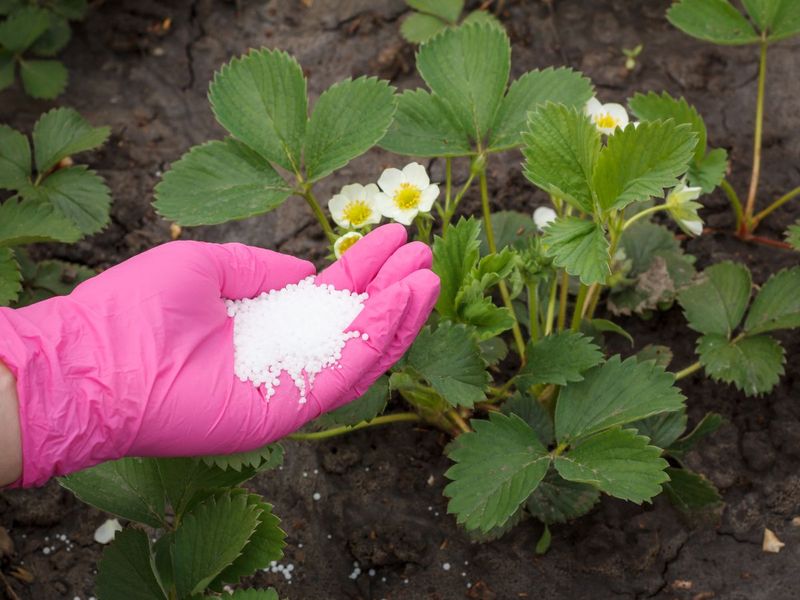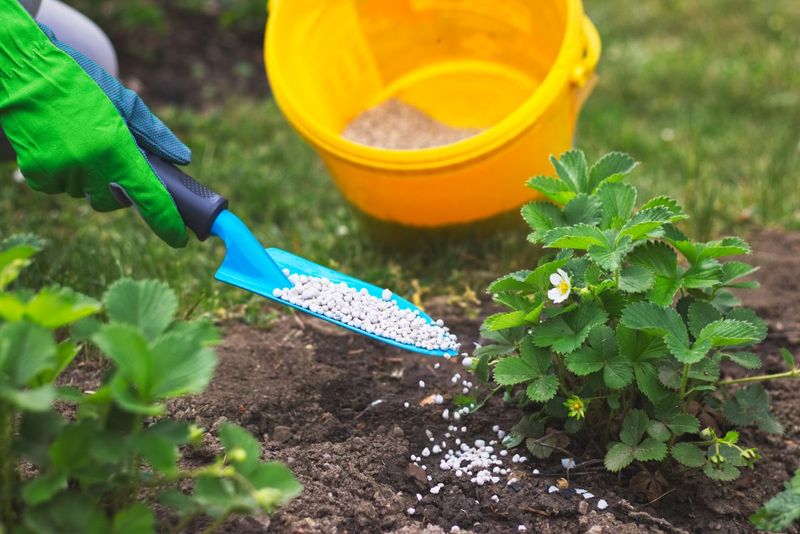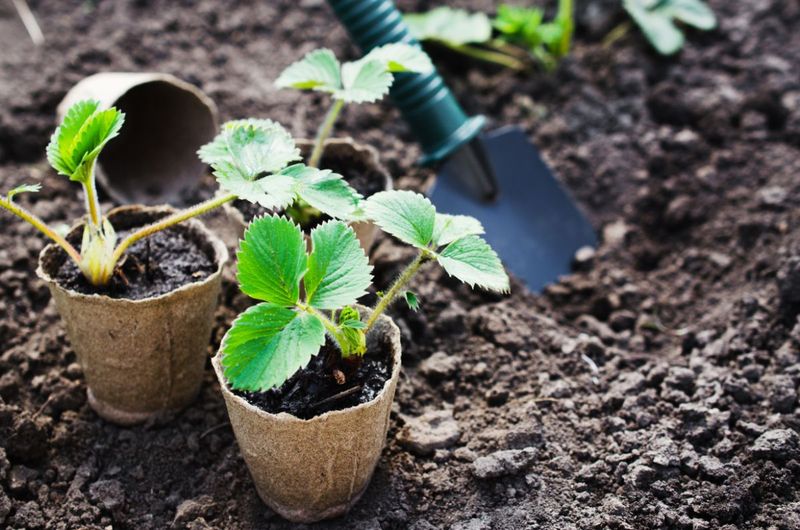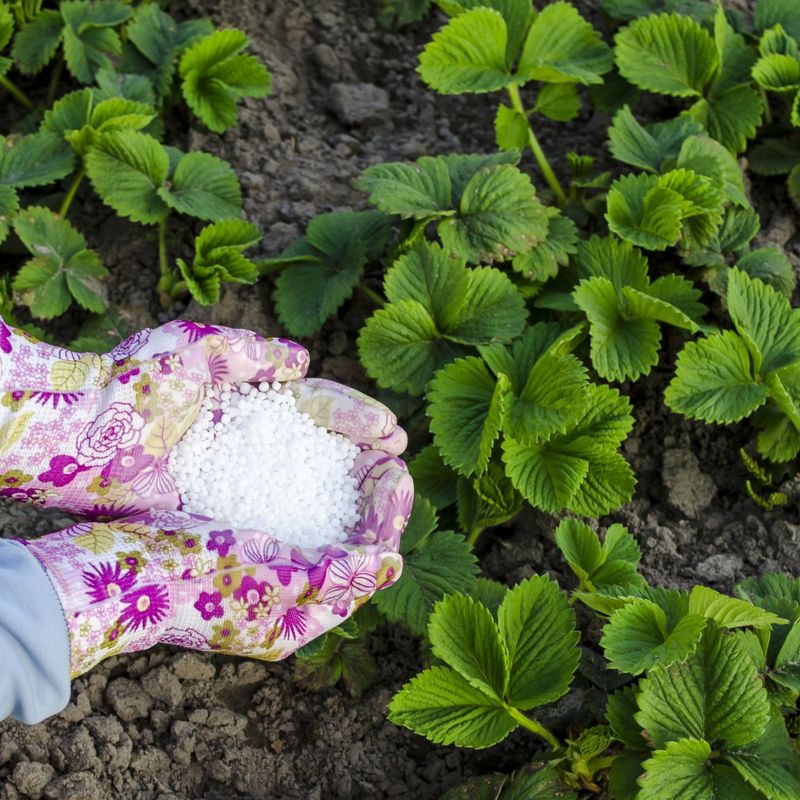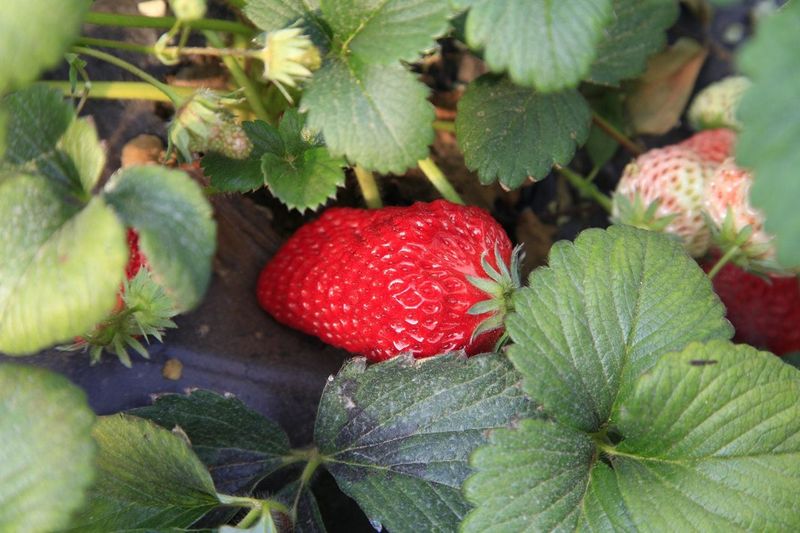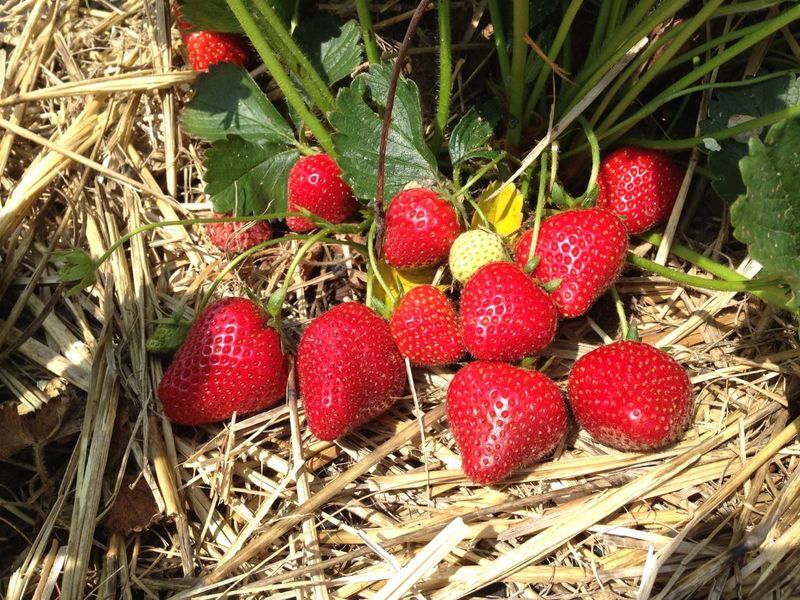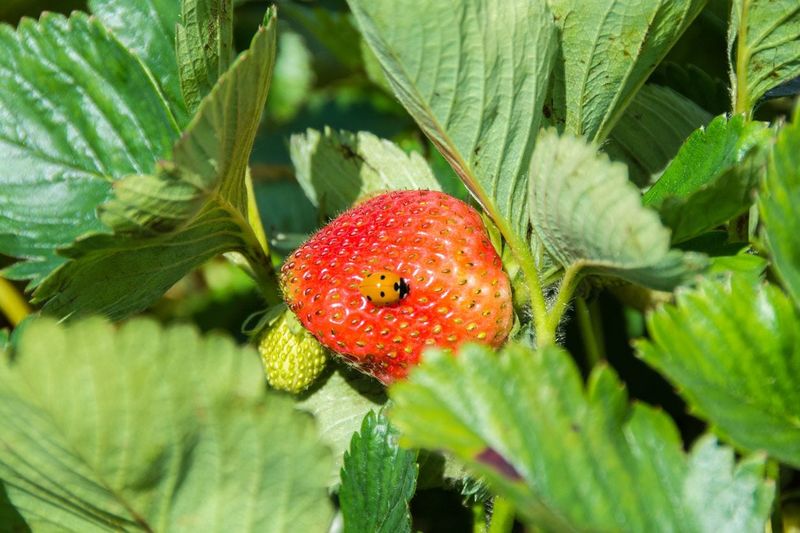Fertilizing strawberries at the right time can significantly impact the quality and quantity of your harvest. While it might seem straightforward, there are several nuances to consider.
This blog post explores essential tips to ensure your strawberry plants thrive, producing juicy and plentiful berries. Timing, the type of fertilizer, and proper soil preparation are key factors in achieving the best results.
Let’s explore these tips to optimize your strawberry fertilization process!
1. Fertilizing Too Late
Applying fertilizer too late in the season can lead to a lush display of leaves rather than bountiful fruit production. Strawberries prioritize foliage growth when nutrients arrive late, leaving less energy for developing juicy berries.
To combat this, begin fertilizing early in the growing season, focusing on root and flower strengthening. Early fertilization encourages the plant to channel its energy into both root development and flowering, ensuring abundant fruit later.
Timing is everything; start your fertilization process as the season kicks off to strike the perfect balance between foliage and fruit.
2. Using the Wrong Type of Fertilizer
Selecting the wrong type of fertilizer can hinder your strawberry’s fruit production. High-nitrogen fertilizers, for instance, fuel leafy growth at the expense of fruit yields.
For optimal balance, choose a fertilizer rich in phosphorus and potassium, which supports flowering and fruiting. Balanced formulas can nurture both the plant’s greenery and its berry-bearing capabilities.
Reading labels carefully and understanding fertilizer composition helps ensure that your strawberries receive the right nutrients at the right time, leading to sweet and plentiful harvests.
3. Skipping Fertilization in Early Spring
Strawberries crave an early-season nutrient boost to jumpstart growth. Ignoring this need may result in weak runners and sparse blooms.
A slow-release fertilizer or a layer of compost applied as new growth appears can provide the essential nutrients strawberries need.
This early intervention sets the stage for strong, vigorous plants capable of producing a bounty of berries. Regular attention to early fertilization prepares the plant for a successful season, addressing its foundational growth needs.
4. Neglecting Soil Preparation
Poor soil quality can undermine the effectiveness of your fertilization efforts. Strawberries thrive in well-prepared soil enriched with organic matter.
Before planting, amend your garden with compost or well-rotted manure to enhance the soil’s nutrient profile. This provides a fertile ground for strawberry roots to expand and absorb nutrients effectively.
Good soil preparation not only supports healthy growth but also enhances the fruit’s flavor and size, making your careful preparation well worth the effort.
5. Over-Fertilizing
While it may seem beneficial, over-fertilizing can lead to excessive leaf growth and weak fruit. Overloading your strawberries with nutrients disrupts their balance, favoring foliage over berries.
Moderation is key; apply fertilizer following package instructions to avoid nutrient imbalances.
This careful approach ensures your strawberries grow robustly, focusing on producing sweet and plentiful fruit. By observing moderation, your fertilization efforts will result in healthier plants and tastier harvests.
6. Ignoring Mid-Season Feeding
Strawberries benefit greatly from a mid-season nutrient boost to maintain fruit production. Without it, plants may struggle to keep up with their fruiting demands.
After the first fruiting cycle, a dose of liquid fertilizer or compost tea rejuvenates the plant, supporting continued berry development.
Mid-season feeding ensures that your strawberries remain productive and healthy, offering a steady supply of delicious fruit throughout the season. This crucial step keeps the momentum going for a successful harvest.
7. Not Mulching After Fertilizing
Neglecting to mulch after fertilizing can lead to nutrient loss and soil moisture issues. Without mulch, rain can wash away precious nutrients, and fluctuating temperatures can stress the plants.
Applying a straw mulch layer helps retain moisture, stabilize soil temperature, and keep nutrients where they belong.
Mulching acts as a protective barrier, ensuring your fertilization efforts are not in vain. This practice fosters a stable environment for strawberries to flourish, leading to healthier plants and a more abundant harvest.
8. Ignoring Pest Prevention During Fertilization
Fertilization periods can attract pests that undermine your efforts. Overlooking pest prevention can lead to damaged leaves and reduced berry yields.
Incorporate pest control measures alongside fertilization to protect your plants. A gentle bug spray or natural deterrents can keep harmful insects at bay.
By combining fertilization with pest prevention, you create a healthier environment for your strawberries, ensuring a successful and bountiful harvest. This dual approach safeguards your investment, preserving the integrity of your plants.
